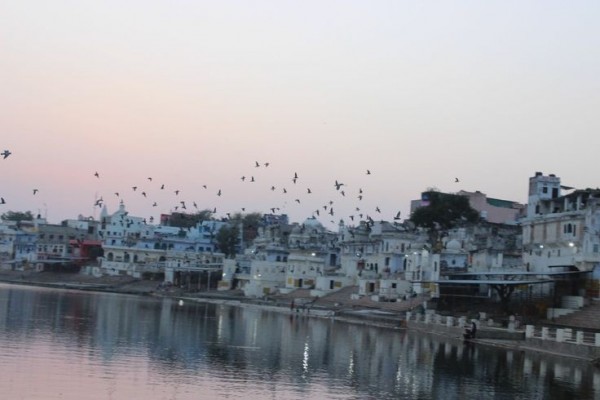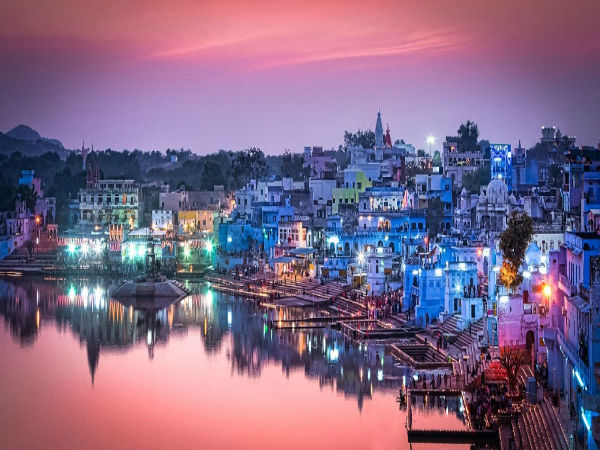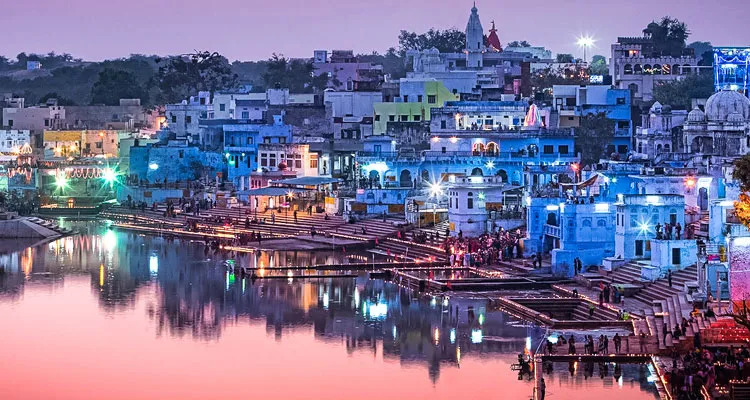


Ajmer is a vibrant city that is just 14 kilometres from Pushkar, a town known for its pilgrimage, and 130 kilometres southwest of Jaipur. The city’s name originates from “Ajay Meru”, referring to it as invincible hills due to its scenic location. Ajmer, which is home to a multitude of tourist attractions, is an ideal example of the uniqueness of Indian ethics and society and showcases how well different religions, communities, and cultures can cohabit and thrive together.
Ajmer is still a well-liked tourist destination and a centre for Muslim and Hindu pilgrimages alike. Muslims from all over the world travel to the ultimate resting place of the Sufi Saint Khwaja Moinuddin Hasan Chisti.
Explore Ajmer to see the stunning Mughal architecture surrounded by a meditative atmosphere. Thanks to the Golden Jain Temple, the city attracts Jain pilgrims and tourists alike. It is worth visiting Ajmer to see the stunning Mughal architecture surrounded by a tranquil and soothing atmosphere.
Raja Ajaypal Chauhan built the city in the seventh century AD, and the Chauhan Dynasty was centred there until the 12th century AD. The earliest hill fort in India, Taragarh, was built by the Chauhan dynasty and is an additional must-see attraction in Ajmer. Mohammed Ghori's victory over Prithviraj Chauhan led to the establishment of several dynasties in Ajmer. Given the presence of the revered Ajmer Sharif Dargah, the city's most visited tourist attraction, the Mughal Sultans had a special affinity for Ajmer. The first encounter between the Mughal King Jahangir and Sir Thomas Roe, the Ambassador of the Court of King James 1 of England, took place in Ajmer in 1616. The city does indeed have a rich antiquity.

1. Airway: The Sanganer Airport in Jaipur is the closest airport to Ajmer, which is located approximately 135 kilometres away from the city. Major urban areas like Delhi and Mumbai are easily accessible from the airport. You can rent a cab to get to Ajmer whenever you arrive at the airport. Then it will take two to three hours to travel from the airport into the city. Perhaps reserve a taxi in advance or rent one from one of the taxi dealers well outside the airport.
2. Roadway: The Rajasthan State Road Transport Corporation connects Ajmer to adjacent cities including Delhi, Jaipur, Udaipur, Jodhpur, and Jaisalmer using premium and semi-deluxe buses that are both air-conditioned and non-air-conditioned. Privately owned tour companies also operate both regular and Volvo buses along this route.
3. Railway: The Mumbai-Ahmedabad-Jaipur-Delhi-Ajmer Line's Junction railway station is situated inside the city. Major Indian cities are accessible from the station. Ajmer Shatabdi and Ajmer Rajdhani are a couple of the most well-liked trains that travel this line every day.
Summer (May – September): 23 °C (73 °F) to 44 °C (111 °F)
Winter (October – April): 5 °C (41 °F) to 30 °C (86 °F).
The best time to visit Ajmer is from October to March, which is the Monsoon and Winter season. In contrast to the oppressive summer temperatures between April and June, the weather is nice. Therefore, if you're intending to travel during the Warmer months, plan your visit for May. Summer is a big no. During the monsoons, the city is verdant, cool, and has lovely surroundings. With the gorgeous weather as the cherry on top, October and November are the best months to visit Ajmer because this is when the majority of festivities, both religious and cultural, take place.
Two days are more than enough to see all the best spots to see in Ajmer, while you may easily extend to three if you wish to explore the city or just unwind by the pool.

1. THE AJMER SHARIF DARGAH
This Sufi shrine has the maqbara (grave) of Khwaja Moinuddin Hasan Chishty, a Sufi saint known as Garib Nawaz. The 13th-century shrine is well-liked by people of all faiths who come here in order to have their thoughts and wishes granted. The main gate, also known as the Nizam gate, the Shah Jahan gate built by the Mughal Emperor, and the Buland Darwaza are the three gates that surround the shrine. The pious and delicious cuisine offered to worshippers at this holy sanctuary is another major lure. Devotees congregate in droves to get the blessing of this prasad, which is cooked in enormous pots known as "degs."
2. FORT KISHANGARH
In Kishangarh, Rajasthan, there is a stunning fort called Kishangarh Fort near Ajmer. When one visits the fort, they will find prisons, granaries, armies, and other key structures there. The largest building there is called the Durbar Hall, and it was in which the monarchs held daily official sessions. The Phool Mahal, which is decorated with exquisite murals and frescoes, is without a doubt the fort's most beautiful location. It brilliantly displays the majesty of the Rathore clan's kings.
3. ANASAGAR BARADARI
Anasagar Baradari are the white marble structures that are located on the south-eastern riverbank of the stunning Ana Sagar Lake in Ajmer. It is a Mughal building that is surrounded by water features in a landscape that resembles a garden. These structures have a long and illustrious history; they were once a part of the Shah Jahan and Jehangir's Daulat Bagh pleasure garden. These five structures served as both residences and offices under British control.
4. SONIJI KI NASIYAN
The Soniji ki Nasiyan, popularly known as the Ajmer Jain Temple, honors Risabh or Adinath and is a superb example of elaborate building. It has a red stone entryway and a marble stairway within that is inlaid with carvings of the saintly Tirthankars, clairvoyant Jain masters who propagated morality. This temple, built in the late 19th century, is one of India's wealthiest temples.
A few distinct types of accommodations are ones that most of us are familiar with. There are many possibilities for short-term lodging, whether you're searching for a hotel, an inn, a guesthouse, or a dormitory. They include the hotels Atlantica, Sahil, Mittal Paradise, Pravasi, and Swad restaurant in Dharamshala, all of which are reasonably priced and offer friendly service. With the access of surrounding attractions and the greatest amenities, make your stay in Ajmer memorable. There are numerous tourist attractions close to lodging, including the Magazine Museum, the Ajmer Sharif Dargah, the Anasagar Lake, the Chamunda Mata Temple, the Taragarh Fort, and the Pushkar Lake.
Few of the top places to stay are:
Ramada Ajmer · Royal Heritage Kishangarh · Fort Barli · Hotel LN Courtyard · KC Inn Ajmer · Hotel Data Inn · The Chitvan Resort ·